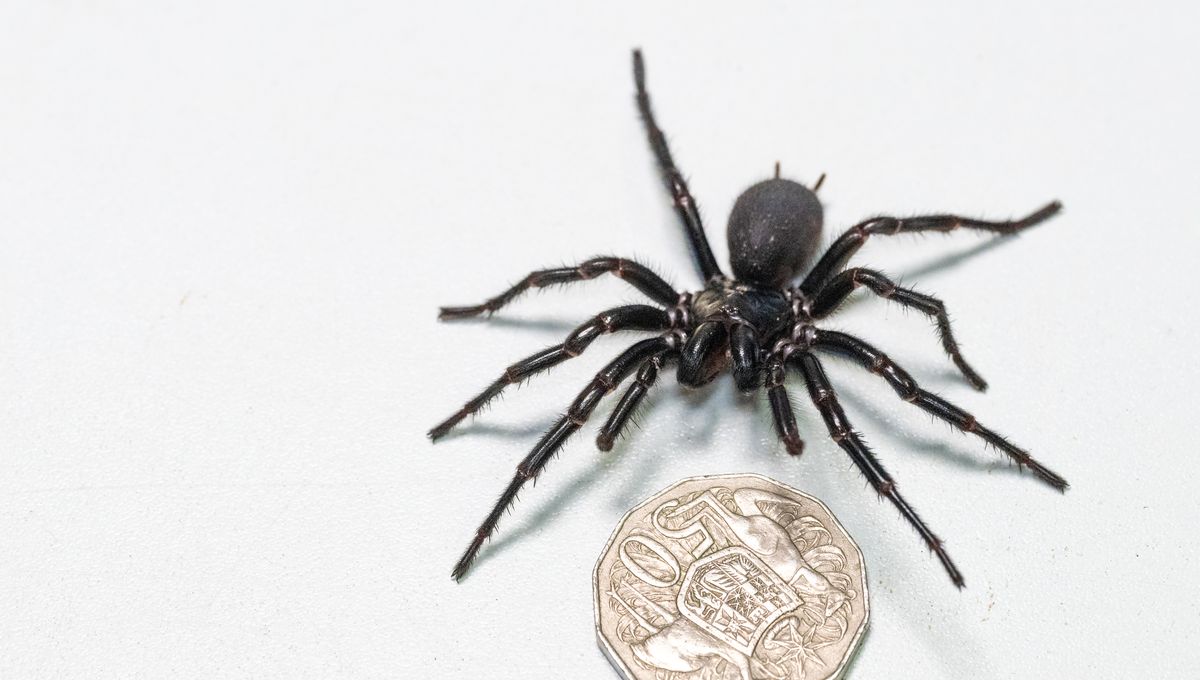
Arachnophobes, look away now. Rarely do we believe at IFLScience that some small part of spider ecology or behavior can’t overcome the horror felt by even the most fearful of spider-phobes, but this one might be a step too far. Behold Hercules, the largest ever male specimen of a Sydney funnel-web spider (Atrax robustus). Not only does he measure almost 8 centimeters (3 inches) foot to foot, he is also one of the world’s most deadly.
Hercules was found around 80 kilometers (50 miles) north of Sydney and was taken to a local hospital. The team at Australian Reptile Park collected him and soon realized the specimen was the largest spider ever received from a member of the public in Australia. Hercules’ enormous 7.9-centimeter foot-to-foot length knocks the previous 2018 record holder “Colossus” off the park’s top spot.
“We’re used to having pretty big funnel-web spiders donated to the park, however receiving a male funnel-web this big is like hitting the jackpot,” said Emma Teni, a spider keeper at Australian Reptile Park, in a statement sent to IFLScience.
Australian Museum describes Sydney funnel-web spiders as typically between 1 and 5 centimeters (0.4-2 inches), with the females typically smaller than the males and much less toxic. They are notoriously aggressive with large fangs, and will rear up when threatened. These spiders live in burrows and will rush out to catch small lizards, beetles, and other invertebrates that they then consume inside their burrows.
They are among Australia’s most venomous species, with a bite able to kill a person in as little as 15 minutes. According to the University of Melbourne there have been 13 recorded deaths from these spiders; however, since the development of an antivenom in the early 1980s, no deaths have been recorded.
Australian Reptile Park said they will add Herculus to their antivenom programme, which will see the spider “milked” as the venom is extracted and used to create the antidote.
“People can bring any collected funnel-web spiders to the Reptile Park itself,” Teni explained. “However, if they can’t get to us, we have drop off zones around Sydney, the Central Coast and Newcastle and all facilities are provided with a spider safety kit to house the spiders until the Australian Reptile Park staff can come and pick them up each week.”
Australian Reptile Park is the only park in Australia to “milk” funnel-web spiders to make the antivenom. They suggest this practice could save up to 300 lives every year. “With having a male funnel-web this size in our collection, his venom output could be enormous, proving incredibly valuable for the park’s venom program,” continued Teni.
In other spider news, a species lost for 92 years was rediscovered “tap dancing” in Portugal and – just to scare you even further – human blood is an aphrodisiac for one spider species…
Source Link: Behold Hercules, The Largest-Ever Male Specimen Of Australia’s Most Dangerous Spider